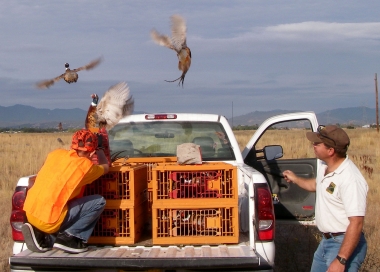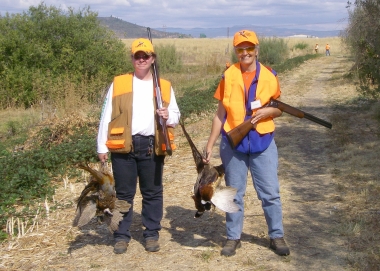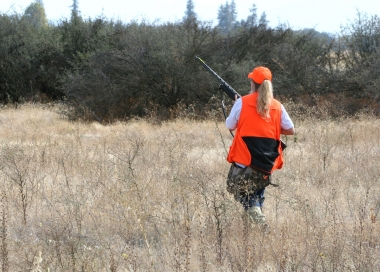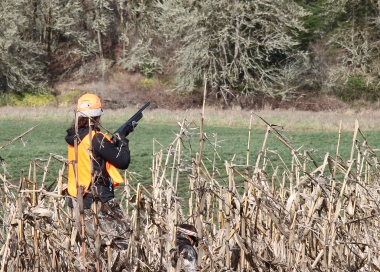
Western Oregon Fee Pheasant Hunts
The Western Oregon Fee Pheasant Hunts offer new hunters a chance to hone their skills in a hunt that’s close to home and offers a good chance of bagging some birds.

7 reasons to consider a Fee Pheasant Hunt
1. Hunt areas are close by. Fee pheasant hunts are on ODFW wildlife areas near major metropolitan areas:
- Portland (Sauvie Island Wildlife Area).
- Corvallis (EE Wilson Wildlife Area).
- Eugene (Fern Ridge Wildlife Area.
- Medford (Denman Wildlife Area).
These hunts start in September, check the Game Bird Hunting Regulations for specific details in each area.
2. Hunting is relatively easy. The pen-raised birds you’ll be hunting don’t have the survival skills of wild birds, making them much easier to hunt.
3. You might bag your limit in just a few hours. Depending on how many birds the wildlife area puts out and how many other hunters are chasing them.
4. You won’t need scouting skills. Pheasants are released on the wildlife areas every few days during the fee hunting season and typically stick close to where they’re released. This makes it easier for hunters to find the pheasants and flush them out.
5. Camouflage clothing isn’t necessary. A pair of jeans or sturdy pants and shoes for walking through brush are good ideas, as is a long-sleeved shirt. Add boots and rain gear if it’s wet. A blaze orange hat or vest is recommended.
6. You don’t need a bird hunting dog. Although a dog can make it easier to find or flush a pheasant and even retrieve your harvest, birds will fly up when the hunter gets close.
7. They’re a great first hunt! Register for an ODFW pheasant hunt workshop where you will learn shotgun skills, safe and ethical hunting and a chance to hunt with a mentor. Check MyODFW.com to see upcoming workshops and events.
7 pheasant hunting tips
We asked some experienced hunters for their tips on hunting ring-necked pheasants.
1. Select a 12, 16 or 20-gauge shotgun with a modified choke, and #3 or #4 steel shot. *Non-toxic shot is required on ODFW wildlife areas.
2. If you’re new to shooting shotguns, practice on clay birds at the range first. You’ll be more confident and accurate when it comes time to hunt for birds.
3. Always follow firearm safety rules:
- Always keep the muzzle pointed in a safe direction.
- Be sure of your target, and what’s in front of and beyond it.
- Always treat a firearm as if it is loaded.
- Keep your finger out of the trigger guard until you’re ready to shoot.
- Wear a hunter orange hat or vest so other hunters can see you.
4. Learn what pheasants sound like to help you find them in the field. Listen to a ring-necked pheasant.
5. Choose cool, overcast days and hunt in the early to mid-mornings during these early fall hunts; avoid mid-day when it’s warmer and the birds are hunkered down.
6. As you’re hunting, look for good ring-necked pheasant habitat – areas with cover such as shrubs and taller grasses, and at the edges of ponds, channels or waterbodies.
7. Hunt the wildlife areas during the week, if you can. You’ll usually see fewer hunters than on weekends.
Once you’ve bagged your bird, you’ll want to clean it. Learn how with this video.
Good luck on your hunt. And if you get your bird(s), or even if you don't, send us a photo of your hunt!
Heading photo by Rick Swart.





